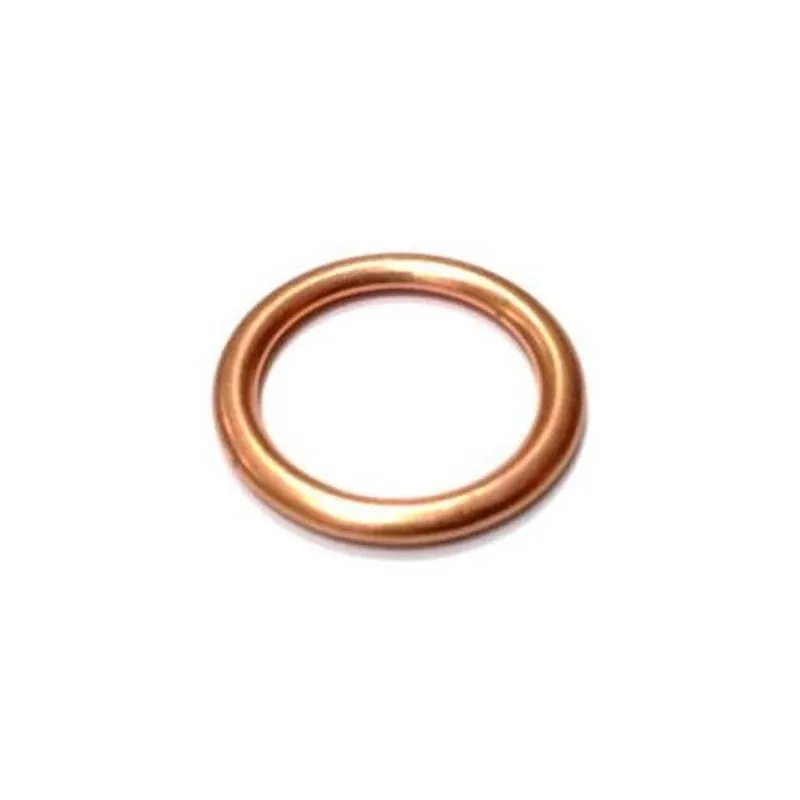14mm id crush washer
Understanding 14mm ID Crush Washers Importance, Applications, and Features
Crush washers are essential components widely used across various industries to provide critical sealing solutions. Among them, the 14mm inner diameter (ID) crush washer has gained popularity due to its effectiveness and versatility. This article focuses on the features, applications, and best practices when using 14mm ID crush washers.
What is a Crush Washer?
A crush washer, also known as a compression washer, is a thin disc made of soft materials, usually metal or rubber. When compressed between two surfaces, it deforms slightly to create a tight seal, preventing leaks of fluids or gases from fittings, pipes, or automotive components. The unique design and material properties allow them to accommodate irregular surfaces while providing reliable sealing capabilities.
Specifications of 14mm ID Crush Washers
The specifications of a crush washer play an essential role in its application. For a 14mm ID crush washer, the inner diameter of 14 millimeters is crucial, as it determines compatibility with bolts and fittings of corresponding sizes. Generally, the outer diameter (OD) and thickness are also important but can vary depending on the specific requirements of the application.
Crush washers are typically made from materials such as copper, aluminum, or rubber, each serving different purposes. Copper washers, for example, are commonly used in automotive and hydraulic applications due to their durability and resistance to corrosion. In contrast, rubber washers are favored in applications where high flexibility and resistance to chemicals are required.
Applications of 14mm ID Crush Washers
14mm ID crush washers find utility in numerous applications. In the automotive industry, they are often used to seal oil pans, transmission casings, and various fluid connectors. Their ability to withstand high pressures and temperatures makes them reliable components in engines and hydraulic systems.
In plumbing, 14mm ID crush washers are indispensable for sealing fittings and connectors, ensuring leak-free installations in water supply lines and gas applications. Additionally, they are utilized in the aerospace industry for sealing hydraulic lines and fuel systems, where precision and reliability are paramount.
14mm id crush washer

Best Practices for Using Crush Washers
To ensure optimal performance and longevity of 14mm ID crush washers, consider the following best practices
1. Material Selection Choose the appropriate material based on the application requirements, such as temperature tolerance, corrosion resistance, and flexibility.
2. Surface Preparation Ensure that the mating surfaces are clean and free of debris to maximize sealing effectiveness.
3. Proper Torque Follow the manufacturer’s specifications for torque levels when fastening components. Over-tightening can lead to damage, while insufficient torque can result in leaks.
4. Inspection Regularly inspect crush washers for signs of wear, deformation, or damage to prevent leaks in critical systems.
5. Replacement Always replace crush washers during disassembly, as reusing them can compromise their sealing capabilities.
Conclusion
The 14mm ID crush washer is an essential component that plays a vital role in ensuring leak-free operations across multiple applications, particularly in automotive, plumbing, and aerospace industries. By understanding the features, applications, and proper usage of these washers, professionals can enhance the reliability and efficiency of their systems.
-
Understanding Different Types of Oil Drain Plugs: A Comprehensive Guide
News Jun.27,2025
-
The Role of Nylon Washers in Oil Drain Maintenance: A Practical Guide
News Jun.27,2025
-
The Essential Guide to Drain Plug Washers: Types, Uses, and Best Practices
News Jun.27,2025
-
Everything You Need to Know About Washer and Plug Sealing: Polaris-Specific and General Tips
News Jun.27,2025
-
A Comprehensive Guide to Different Types of Oil Drain Plugs for Efficient Maintenance
News Jun.27,2025
-
A Complete Guide to Oil Drain Plug Washers: Tridon and Euro Car Parts Solutions
News Jun.27,2025
-
Understanding Oil Drain Plugs: Types, Issues, and Replacements
News Jun.26,2025
Products categories















